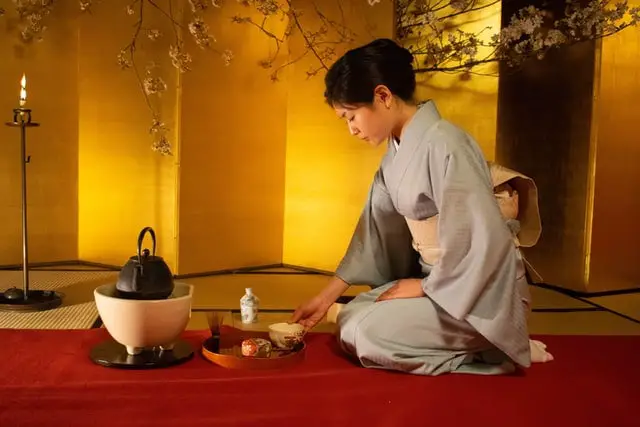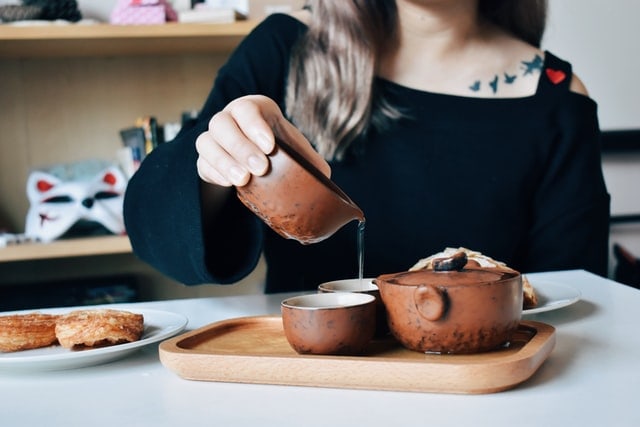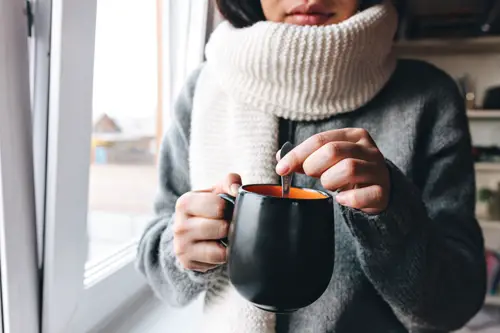
From sencha tea caffeine content to health benefits and everything in between, this is your guide to the brew!
Although I favor Chinese teas, there is no denying that Japanese sencha is one of my go-to drinks for green tea. If you are curious about these tea leaves, then you are in the right place.
In this post, I will give you insight into all sencha, including how to prepare and drink the tea.
Let’s get started!
Contents
Yes sencha, like most green teas, naturally contains caffeine.
The exact amount, however, can vary by variety as well as manufacturer.
You can find anywhere from 12 to 75mg of caffeine in a single cup.
This is why you should limit your consumption of sencha to one or two cups a day.
Drink too much and you may suffer from irritability, jitters, or sleep issues.
You should avoid drinking sencha in the late evening or night.
What confuses most people about sencha is its association to green tea.
Well, there is no need for this mix-up – sencha is a type of steamed green tea.
It is most popular in Japan, although sencha is grown in other countries as well.
However, due to differences in growing and processing, Japanese sencha tends to be pretty unique.

As mentioned, sencha can be categorized according to when it is harvested.
At the same time, it is also identified according to the region where it was cultivated, how it is steamed, and even the specific cultivar.
Due to this, it can be a bit confusing to understand the grading system that governs sencha.
However, here are the varieties that you need to know about:
Some people are a bit confused about whether or not gyokuro has any link to sencha.
Although they are both green teas, gyokuro is shade grown, while sencha is grown in the sun.
Thus, they have different flavors and nutrient levels as well.
What’s really interesting about sencha is just how many healthful properties it has.
In fact, it has the following advantages for you:
Sencha is found to have excellent antioxidant properties.
As such, it plays a functional role in reducing oxidative stress in the body.
This prevents your cells and tissues from being damaged and resulting in various diseases.
So, in general, sencha is great for maintaining your general health.
It appears that sencha may be quite effective at reducing your risk of cancer.
This is due to a couple of reasons.
First, sencha has antimutagenic properties – it prevents cells from mutating in ways that can lead to cancer.
At the same time, sencha is shown to have anti-genotoxic properties as well.
Now, genotoxic substances are known for causing cancer, but they are different from mutagenic elements.
This means that sencha could potentially prevent various kinds of cancer.
On top of this, research has also found that sencha is specifically good for preventing biliary tract cancer.
Drinking sencha green tea on a regular basis could potentially reduce your risk of developing cardiovascular disease.
In particular, sencha does this by inhibiting the effect of ACE enzymes.
In addition to preventing cardiovascular disease, there is some evidence that the tea may slow the progression of the disease as well.
Now, despite popular claims, sencha isn’t directly linked to weight loss.
Thus, if this is something that you are looking for you, you would be better of checking out the best green tea brand for weight loss.

The flavor of sencha can differ with the variety.
For instance, ichiban has a sweeter and richer taste.
Fukamashi, on the other hand, has an oceanic flavor, that may be likened to seaweed.
You may also find these tea as being described as “green”, “vegetal”, and “grassy”.
Now, let’s take a look at how you should brew sencha.
For most sencha types, you can heat the water to around 158°F and steep the leaves for 1 to 2 minutes.
Sincha, on the other hand, should be steeped for just 40 seconds or so.
Make sure to use water that is well below the boiling point for these teas.
Otherwise, you will risk losing the delicate flavors that they are known for.
Now, when it comes to steeping time, you can adjust it according to your taste.
You should avoid steeping it for much longer than advised, however.
Steeping sencha for too long can cause it to produce an astringent and unpleasant flavor.
It is best to drink sencha plain.
While you can add milk to other kinds of green tea, this isn’t recommended with sencha.
You shouldn’t add sugar either.
Not only will these additions distort the natural flavors of the tea, they will also reduce the impact of the healthy components.

These days, sencha is seen as being intrinsically Japanese.
The reality, though, is that green tea was brought over from China.
Even the processing methods were borrowed from the Chinese.
Nevertheless, it can be argued that the processing method for sencha was perfected in Japan.
Now, the word sencha – which means to “infuse” or “decoct” used to refer to green tea in general.
However, the use of the word was narrowed thanks to a tea planter known as Nagatani Soen.
He is the one who came up with a way to halt oxidation by steaming, pressing, and rolling tea leaves.
Thus, from then on out, teas that underwent this processing were known as sencha.
Like most green teas, sencha is grown in the sun.
The leaves are plucked at various points during the season.
This results in first flush, second flush, etc. sencha.
The first flush is considered to be the highest quality, with the quality decreasing the longer the leaves are allowed to mature.
Once the leaves have been plucked, they undergo deep steaming.
This is where the leaves are steamed for 30 seconds longer than usual.
As a result, the leaves are broken down into smaller filaments, ensuring that they brew more quickly.
As you can see, there is a lot more to sencha than most people will assume. Now, however, you know the whole story.
If you enjoyed this post, you should check out our Pinterest page. It has plenty of other posts on all kinds of green tea.
